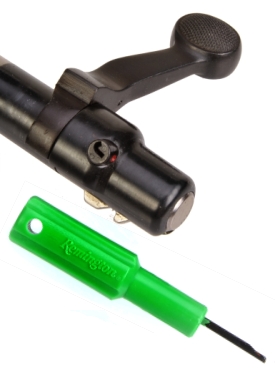 The last time I read a claim of malfeasance regarding Remington’s Integrated Security System, “BigVernShakeandBake473” indicated that, if not removed, the “J” Lock would eventually morph into a giant spore and affix itself to a gun owner’s brain stem for some undefined, but clearly malicious purposes. Several other message board participants immediately articulated supporting experiences. In the Land of Oz, social community discourse has identified the ISS feature as the cause of unsatisfactory group sizes, hung firing pins, slow lock time, male pattern baldness, and anything else an active imagination could conjure. The ISS has passed into American folklore.
The last time I read a claim of malfeasance regarding Remington’s Integrated Security System, “BigVernShakeandBake473” indicated that, if not removed, the “J” Lock would eventually morph into a giant spore and affix itself to a gun owner’s brain stem for some undefined, but clearly malicious purposes. Several other message board participants immediately articulated supporting experiences. In the Land of Oz, social community discourse has identified the ISS feature as the cause of unsatisfactory group sizes, hung firing pins, slow lock time, male pattern baldness, and anything else an active imagination could conjure. The ISS has passed into American folklore.
Closer to reality, when not engaged, ISS is a near passive mechanism. Engaged, it is a locking device that prevents an open bolt from rotating to the closed and locked position. I am not commenting on its usefulness, only on its function, and the fact that it is not an innately deleterious biomass or an angry robot. The ISS feature is one of many schemes developed by manufacturers to keep untrained, curious individuals from gaining unauthorized use of a functioning firearm.
The ISS system is actuated by opening the bolt, putting the little green handled “J” shaped key into the bolt shroud lock and rotating it clockwise so that a white dot on the lock barrel is facing butt end of the gun. This causes the little detent ball embedded in the face of the shroud to project and prevent the bolt from closing and locking. To render the bolt operable again, the J lock is rotated anti clockwise… that word alone is almost enough to make me want to be British, until a red dot is staring you in the face while you are holding the gun to your shoulder.
It looks funky and that’s reason enough…

As I do with many things in life, I begin with the desired conclusion then back into the justification so I won’t seem unreasonable. In the case of ISS removal, there were a number of salient points to support my case.
The bolt shroud is enlarged to accommodate the parts, which gives the rifle a… bulbous bolt look.
There are five moving parts, not counting the key, that are added in support of ISS; more parts to fail in an overly complicated little assembly.
A key is required to lock and unlock the ISS system. Personally, I always worry I am going to misplace the key and my rifle will be rendered useless.. probably forever.
Then there is that whole internal, bolt body rubbing distorted mainspring and heavy firing pin thing, as illustrated below. In summation, the ISS bolt shroud looks a bit funky and it is a source of potential breakage, loss and function anxiety. Additionally, the heavy factory firing pin increases lock time and the heavy mainspring increases trigger resistance and bolt closing effort.
Top to bottom – Remington firing pin assembly with ISS, David Tubb’s SpeedLock alloy-composite system without ISS and Remington short action firing pin assembly without ISS.
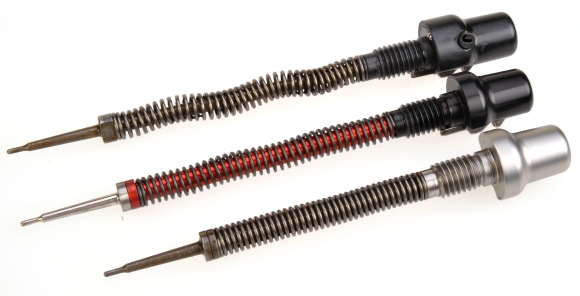
Several non-ISS and ISS Remington bolts were disassembled and it was found that all ISS units had heavy coiled and long springs that were poorly supported at the firing pin tip end and wobbled and slewed from side to side and rubbed within the bolt body when assembled and in operation. I like my springs neat and pointing generally in the correct directions so the factory part had to go.
Too easy to be classified a project…
The easiest way to covert an ISS Bolt to an non-ISS bolt is to replace the firing pin assembly with a standard Remington part. Brownells #767-220-400 Remington Firing Pin Assembly is a factory drop in for a long action blued shroud bolt. Stainless and short action versions are also available. There are of course an number of high performance upgrade assemblies that can be installed just as easily as the factory part. Brownells # 840-000-052, the David Tubb’s SpeedLock System, in addition to removing the ISS feature, offers a lighter composite firing pin that cuts lock time in half and a reduced diameter mainspring that stacks straight, is fully supported at the spring seat and doesn’t rub on the insides of a bolt body. Why would I want to reduce lock speed? To cut the effects of my not inconsequential, standing position, over target wandering.

The SpeedLock System’s shroud is anodized black aluminum. The red anodized firing pin body is made of aluminum alloy, the firing pin tip is made of 4141 steel and the chrome silicon spring has a life of over 500,000 cycles and doesn’t increase trigger pull or bolt closing effort. Sadly, it looks better than most of my rifles.
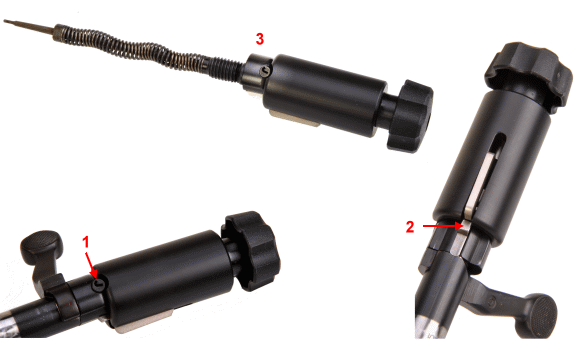
While it is possible, and more… manly, to pull firing pin assemblies out with your teeth or with the assistance of a work bench edge, Brownells # 988-000-004 Firing Pin Removal Tool makes this swap out a fifteen second job. The tool slips over the bolt shroud and it’s extraction hook engages a notch in the cocking piece. The knob at the end of the tool is turned clockwise, which compresses the mainspring and pulls the cocking piece away from the “V” notch in the bolt body. This allows the firing pin assembly to be unscrewed from the bolt body. Once the firing pin assembly is removed from the bolt body, the knob on the removal tool is turned counter clockwise to safely unload the mainspring and allow the firing pin assembly’s removal from the tool. The new assembly is installed by simply reversing the procedure.
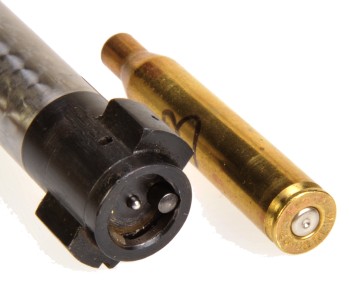
A final check out was required after the part change. Firing pin protrusion – A depth micrometer with a flat anvil was placed over the front surface of the bolt and the depth to the bolt face was measured. The firing pin removal tool was used to unload the mainspring and place the firing pin in the full forward position with the tip of the pin protruding through the bolt face. Then a another measurement from the front surface of the bolt to the protruding firing pin was taken. The depth to the bolt face measured 0.141″, the depth to the protruding firing pin was 0.079″ which meant the firing pin protruded 0.062″. The range of protrusion for a hunting rifle is 0.055″ – 0.65″.
A few casings were primed and fired to assure there would not be a pierced or insufficiently upset primers. No problems were found. Then the rifle was loaded up and a dozen rounds fired to make sure everything actually worked with loaded ammo. The end product is clean.
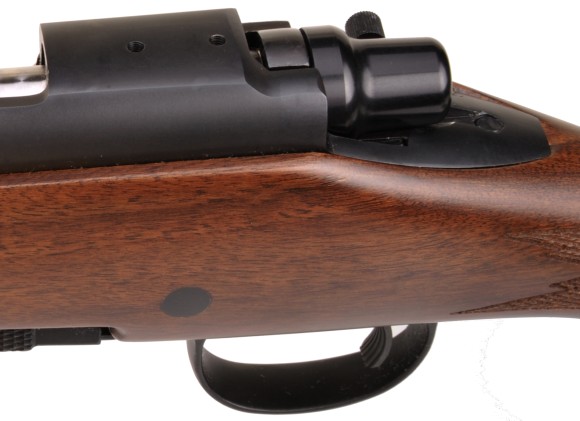

Email Notification